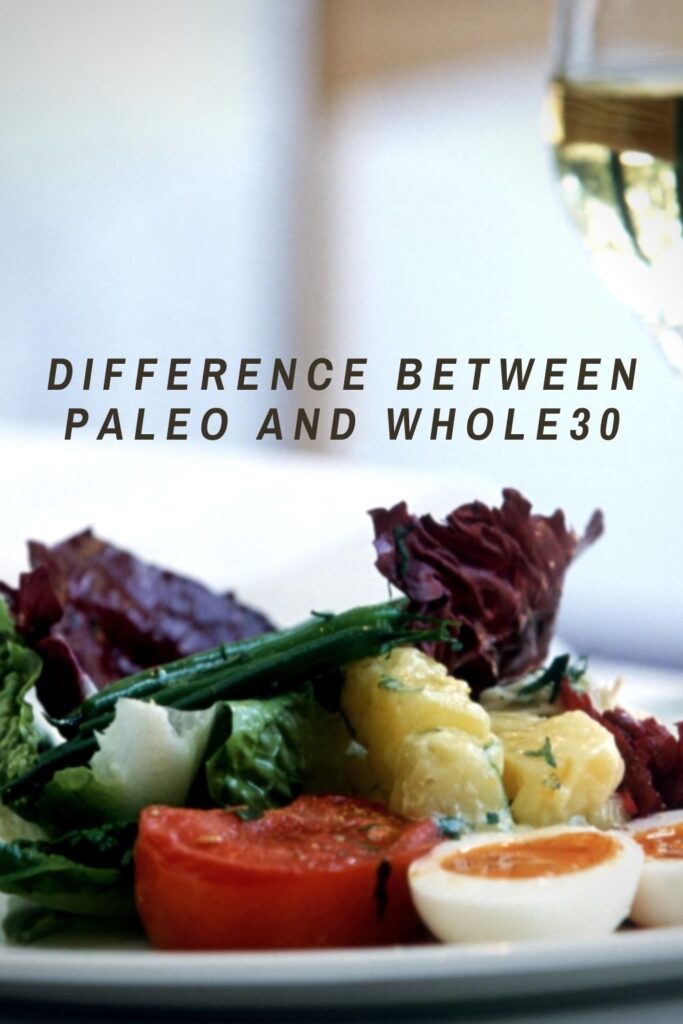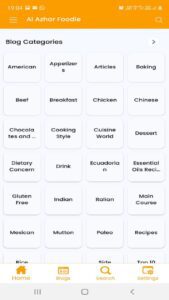Difference Between Paleo And Whole30

They ask me this question all the time. What is the difference between Paleo and Whole30? What is the best? I think it’s helpful to understand the clarification for newer Whole30s and people interested in Paleo. We will talk about the differences between the two to clear up any confusion and answer all of your questions!
The basics of Paleo and Whole30
The Paleo diet model focuses on consuming whole foods, eliminating everything that is processed. The premise for this is that our bodies benefit better by eating as our Paleolithic ancestors would have. The Paleo diet focuses on consuming plant-based meals with high-quality protein and fat.
The Whole30 is often referred to as “a stricter form of Paleo.” While this is true, they both serve different purposes. The Whole30 has more things on its forbidden list than Paleo, but it’s intended as a short reset for your body. Whole30 is a kind of 30-day “reboot” followed by a re-introduction period. During these 30 days, you eliminate certain food groups and then consciously add them back.
Short-term and long-term differences between Paleo and Whole30
One difference between Paleo and Whole30 is that the Whole30 program does not advocate that its participants continue to eat under the Whole30 rules indefinitely. This is not a long-term diet. In fact, it is not labelled a diet at all. The program provides the vehicle that will take you to a place where you can make more conscious decisions after you finish your Whole30 by discovering the foods your body cannot tolerate and then using that information to help you feel better. For example, you may find that dairy products cause bloating or acne, that cereals cause lethargy or autoimmune symptoms, and then you may decide not to include them in your meals in the future.
Whole30 also aims to improve your relationship with food during these 30 days. To do this, it encourages you to evaluate how and why you were eating the way you did, thus creating new and healthy habits instead of the old ones.
Paleo is a form of food geared towards a long-term lifestyle. While Whole30 should be seen as a reboot, Paleo is something that many people choose to keep indefinitely. He’s more forgiving of the things you end up doing every now and then, like snacking and drinking alcohol, two things Whole30 forbids. Whether it’s to achieve weight loss goals, improve health conditions, or simply because that’s when your body feels its best, Paleo is a dietary adjustment made for more than a month.
Rules for Paleo vs Whole30
One of the reasons Paleo is more of a long-term option is that it’s more of a guide. There is a Paleo model of what you should and should not eat, but anyone can choose to eat any “non-Paleo” food at any time if they think it is worth it. Many people eat most of their meals as directed by Paleo, but may choose to eat pasta twice a week. And it’s good. Because it’s their paleo lifestyle.
The guidelines are just that. A guide. Some people may have found that certain foods that are not technically Paleo do not interfere with their digestion or how they feel, and therefore may choose to eat them. Dairy or quinoa may not be a big problem for them. Again, this is great. Some people may disagree with me, but there is no right or wrong way to eat Paleo if you are aware of the pattern and know what works for your body. By doing this long-term, you constantly reevaluate what is helping you and what isn’t helping you feel better so that the pros and cons of Paleo become a line. flexible director to live.
With Whole30, on the other hand, there is certainly a right way and a wrong way. There are hard and fast rules, in black and white, that need to be followed (for your sake, of course) for 30 consecutive days. You can’t cover your baked egg with cheese, let’s just say the cheese doesn’t affect your body and call it Whole30. No Rules are rules … and they are for everyone. These are the rules that make Whole30 stricter than Paleo. There are no Paleo sweeteners like honey or maple syrup or recreated Paleo desserts. So no, you can’t add coconut sugar to almonds to make cinnamon sugar roasted almonds and call it Whole30, even if it’s Paleo.
No products found.
Sugar Dragons and SWYPO
Everything that is Whole30 compliant is also Paleo, but not everything that is Paleo is Whole30 compliant. As mentioned in the cinnamon sugar roasted almonds example, this would be something you could do if you didn’t make a Whole30. One of the most amazing things that happen to people during their Whole30 is that they regain control of their sugar cravings, or better known within the Whole30 community, their Sugar Dragons. I know people who eat Paleo every day, but their day also includes Paleo cookies. AKA, they always have an uncontrollable sugar dragon because they always feed their cravings. Whole30 helps squash your treats and junk food addiction by not allowing it.
Another difference is that Whole30 also doesn’t allow Paleo recreations of binge-worthy food. They call it sex with pants on. The acronym is a way of describing eating foods that are technically Whole30 compliant but don’t taste the same as real foods and maybe wild foods. This means that SWYPO is any food you can’t. Stop. eating. once you start. These are foods that many people have an unhealthy relationship with, and while SWYPO foods are different for everyone, there are some that are explicitly excluded. Pancakes, fries, pizza, and paleo ice cream are a must.
Everything else is conditional and not unique. Some people may have old tendencies to go overboard with French fries or chicken offerings. You may worry less about one or the other, but you used to console yourself with lots of mash and sauce. Paleo has no rules like this to help you with the relationship between you and the way you view and use food, allowing you to eat any Paleo version of any food every day if you want.
Reintroduction
The last big difference between Paleo and Whole30 is that the Whole30 program encourages its participants to go through a deliberate reintroduction phase to reintegrate the excluded foods into their diet one at a time. There is no reintroduction phase with Paleo, the list of foods to avoid is simply to be avoided. Whole30 does not require that you never eat “forbidden” foods again. The purpose of the reintroduction phase is to discover which ones are causing you problems and then allow you to make more conscious decisions in the future by being aware of how certain foods affect you. As the first 30 days of Whole30, this next phase also helps you become more aware of how your body works based on what you put on it.
What is better Paleo vs Whole30?
There is no correct answer to that. Both will have a positive impact on your health and fitness goals. They are similar in that they will provide you with tools to help you feel better than before. With Paleo and Whole30, you’ll avoid eating out of habit to get closer to eating on purpose for nutrition and flavour.
Lots of people use Whole30 as a starting point to dive headfirst into a Paleo lifestyle or go Whole30 and discover Paleo for it. I didn’t even know what Paleo was until my first Whole30, but I knew I felt so good that I wanted to keep eating that way.
Some people choose to take Whole30 to find out which foods trigger different autoimmune reactions they experience or to try to eliminate skin or sleep problems. There are many benefits to both Paleo and Whole30 and they are, on a food safety level, extremely similar. That being said, I will always tell someone to do a Whole30. Even if they are not interested in eating Paleo forever, I believe that the lessons that can be learned from doing so are invaluable and will really make a difference long after the program ends.
And for people who ask me and think they eat Paleo, even with all the similarities, I will still recommend that they do a Whole30. Check out my tips for a successful Whole30, your favourite Paleo resources, and get started! It is an incredible program with all the necessary resources at your fingertips. If you use Whole30 as a starting point for Paleo it will be an easy transition because Whole30 is a bit stricter than Paleo. Basically, at the end of those 30 days, it will be second nature. You will be an expert in Paleo and start with your sugar cravings already in check.
Did you do a Whole30? Are you eating Paleo now? Comment and let’s talk about it!




Pingback: How Many Bananas In A Cup? » Al Azhar Foodie
Pingback: How To Clean Up After Raw Chicken Cooking » Al Azhar Foodie